Companion Plants For Yarrow
What if a single resilient perennial could deter pests, improve soil, and add beauty wherever cultivated? Meet yarrow – the unassuming wonder transforming ecosystems through strategic companion plantings worldwide. I have surveyed and gathered essential wisdom on companion plants for yarrow for mutual benefits spanning increased yields, enhanced biodiversity and ecological harmony through shared plots.
I begin by grounding key companion planting concepts, roles and plant partnerships. An in-depth yarrow profile follows assessing growth habits and site needs for pairing success. Next, I suggest compatible annuals, perennials and herbs alongside considerations combating disease susceptibility. My design and maintenance insight then empowers practice alongside real garden profiles exhibiting the power of this aromatic perennial to elevate entire plant communities through strategic cultivation.
Understanding Companion Planting
Companion planting refers to purposeful interplanting of mutually beneficial plant species. Beyond aesthetics, the proximity of certain plants enhances pest resistance, pollination, nutrient availability and overall ecosystem health.
The Three Sisters technique developed by Native American tribes interplants corn, beans and squash together so all thrive better through reduced competition for sunlight and soil resources. Corn stalks support climbing bean vines while squash leaves shield shallow roots and retain soil moisture for all three plants.
As a hardy perennial, yarrow plays many ecosystem roles from dynamic nutrient accumulator to beneficial insect attractant when planted near fruits, vegetables and ornamentals. Flexible growth in various conditions facilitates partnerships across backyard scales or larger fields.
For more information about Kitchen Gardens you can visit: Onion Growth Stages
Benefits of Planting Yarrow
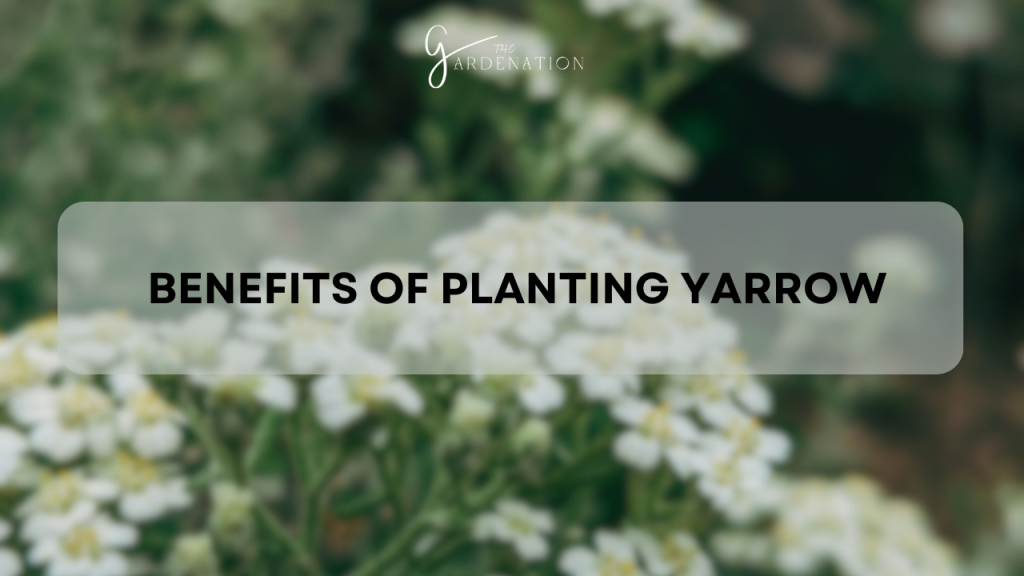
Valued since ancient times for medicinal uses spanning wound care to therapeutic tea blends, yarrow continues demonstrating versatile utility. Alongside culinary value mixed into salads or unique bitter liquors, yarrow’s beauty and resilience supports diverse garden plantings.
Yarrow deters problematic insect pests through exuding natural compounds unpleasant to destructive species. Interplanting drives them away from neighboring crops via disruptive odors. Specific chemical signatures also attract predatory wasps, ladybugs, hoverflies and lacewings that prey on pest populations, providing free biological control.
During active growth and through post-season residue decomposition, yarrow’s deep, dynamic roots draw micronutrients like potassium and phosphorus back up from subsoil layers. Such “mining” benefits surrounding plants now accessing liberated nutrients better via their shallow roots. Rhodonite, copper and magnesium within aged leaves also nourishes soil biota long-term.
Finally, a vibrant burst of summer flowers lasting for months and airy lacy foliage provides habitat and nectar sustaining bees, butterflies and other essential pollinators where planted. Evergreen varieties extend visual impact through frigid winters.
Choosing Yarrow Companion Plants
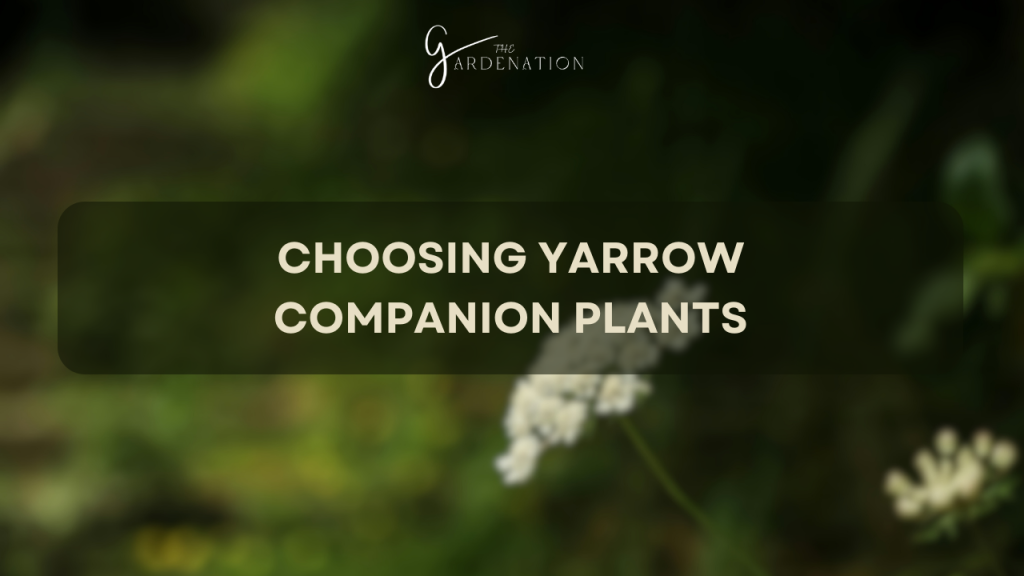
When selecting suitable companions, factor yarrow’s mature size around 2-3 feet tall and 2 feet wide alongside preferences for full sun, good drainage and moderate watering. Take care not overcrowd companions competing for light, moisture and root space.
Fruits and Vegetables
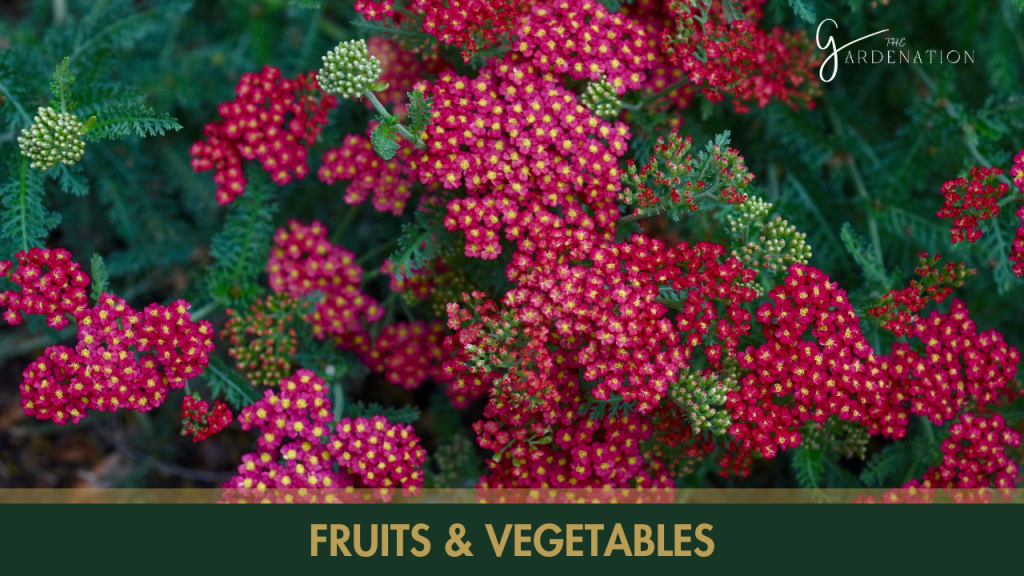
Orchard trees benefit from understory yarrow controlling weeds and drawing pollinators. Strawberries protected nearby resist fungal issues. Deter pests afflicting solanaceous plants by pairing with tomatoes, peppers or eggplants. Curb cabbage worms and carrot flies near brassicas like broccoli and kale. Shield cucurbits from cucumber beetles and squash vine borer larvae.
Culinary Herbs
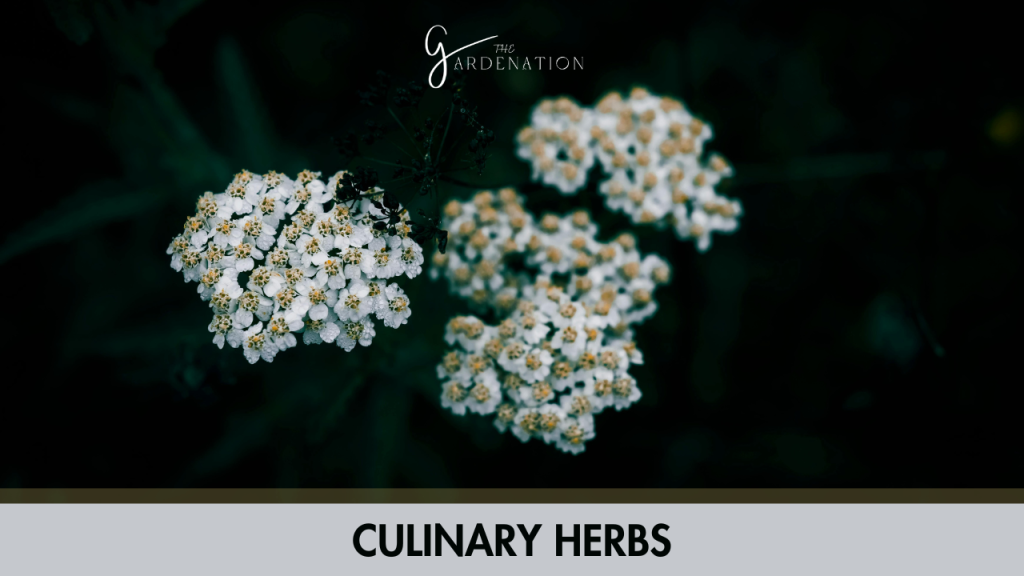
Blend with other sun-loving Mediterranean herbs sharing similar needs like rosemary, thyme and sage. Classics like lavender and chives also thrive alongside yarrow year-round.
Ornamentals
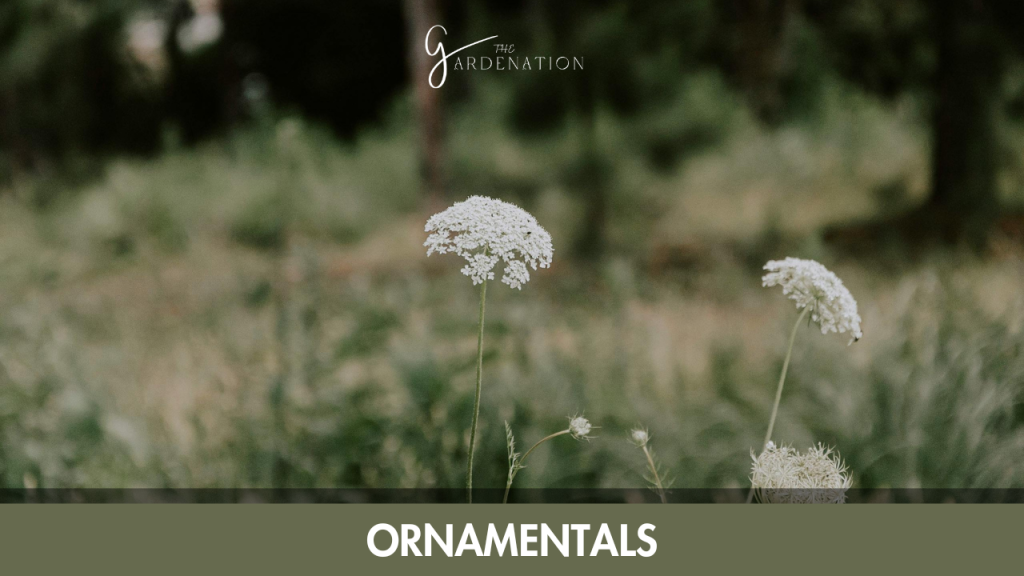
Guard roses from black spot fungus and mites. Contrast flowers and foliage near echinacea, asters and grasses. Evergreens and conifers welcome overwintering habitat.
Avoiding Poor Yarrow Companions
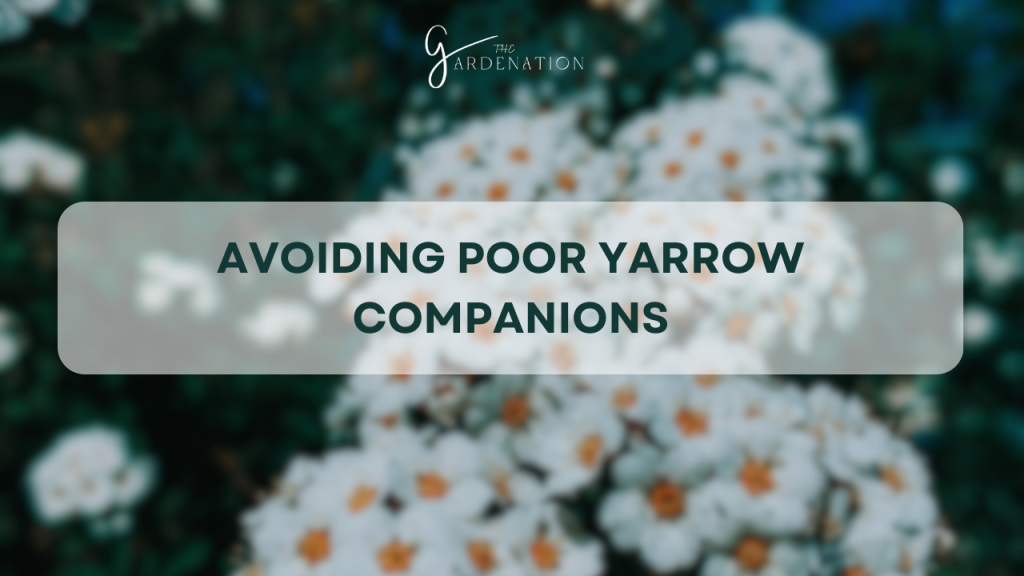
However, some pairings undermine growth for one or both plants. Avoid combining with shade-loving species lacking required sunlight. Prevent outcompeting smaller, less assertive plants unable to thrive alongside yarrow’s dense clumping rhizomes Spreading roots sometimes encroach on taproots of biennials like carrots and parsley – separate these. Powdery mildew susceptibility also limits pairing with certain species.
Tips for Companion Planting
Plot yarrow specimen groupings 1-3 feet apart in sheltered beds and borders. Amend surrounding soil with compost or manure to balance fertility and retain moisture. Remove spent stalks after flowering concludes to improve air circulation and reduce fungus issues. Careful site selection and spacing adjustments maximizes synergies while preventing problems. Experiment with annual and perennial pairings to determine optimal community mixtures over seasons.
Yarrow Companion Planting
Many gardens already showcase yarrow’s pest-fighting powers shielding crops and boosting biodiversity:
The Peterson’s backyard includes yarrow border plantings protecting young apple trees from aphids while also drawing butterflies, ladybugs and pollinators to benefit the entire space.
A community garden in Vermont interplants carrot and parsley rows between yarrow clusters to enhance beneficial insect presence and soil nutrition despite shallow root pairing challenges. They credit Yarrow partly for their town fair blue ribbons each year!
Yarrow’s Role in Ecosystem
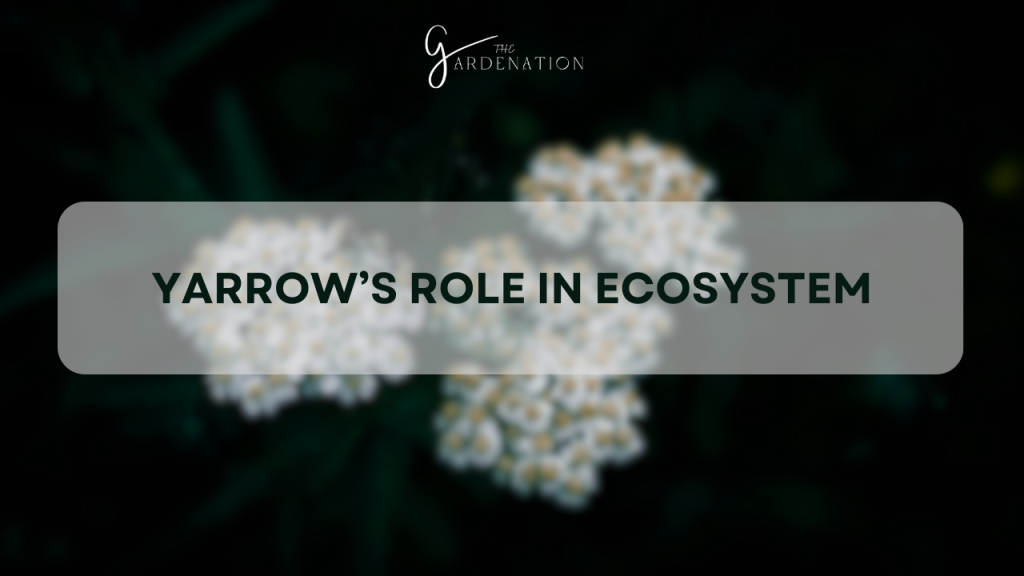
Looking even beyond companion plantings, yarrow holds integral roles within more holistic permaculture gardens and regenerative agriculture systems by:
- Accumulating nutrients from subsurface zones over years then releasing them through mulch to nourish various crops annually
- Allowing minimal tilling or fertilizer inputs reducing disruption of critical soil biota balancing essential functions
- Anchoring spaces between crops or sectors while attracting diverse beneficial insect communities through flowers
Such low-input, high-impact contributions underlie how even species dismissed as common “weeds” offer profound untapped potential waiting to be discovered through fresh eyes.
Frequently Asked Questions About Companion Plants For Yarrow
What are the best vegetable companions for yarrow?
Yarrow makes an excellent companion for tomatoes, brassicas, cucumbers, squash and strawberries. It helps control common pests like hornworms, cabbage loopers, cucumber beetles and spider mites.
Which herbs pair well with yarrow?
Many aromatic herbs complement yarrow, including basil, oregano, lavender, sage, thyme and rosemary. These Mediterranean herbs have similar growing needs and pest resistance benefits.
Does yarrow help roses?
Yes, planting yarrow near roses helps control pests like aphids and spider mites. Both plants also attract beneficial pollinators. Choose disease-resistant rose varieties to avoid powdery mildew.
Is yarrow invasive?
While valued for its spreading nature in some contexts like meadows, yarrow can invade cultivated gardens. Manage this by dividing overgrown clumps, removing flower heads after blooming, and using containment barriers.
Conclusion
This guide aimed to unveil yarrow’s versatile virtues beyond medicinal lore into modern realms of pest control, soil enhancement and ecosystem support heeding permaculture principles. By proactively planting versatile yarrow as cornerstone companion to fruits, vegetables and ornamentals in your landscape, let cooperative synergy and plant allyship bloom as the secret seeds underscoring community resilience and abundance. Soon this subtle herb transforms how we relate to gardens by illuminating connections and possibilities awaiting rediscovery all around us.


One Comment